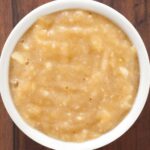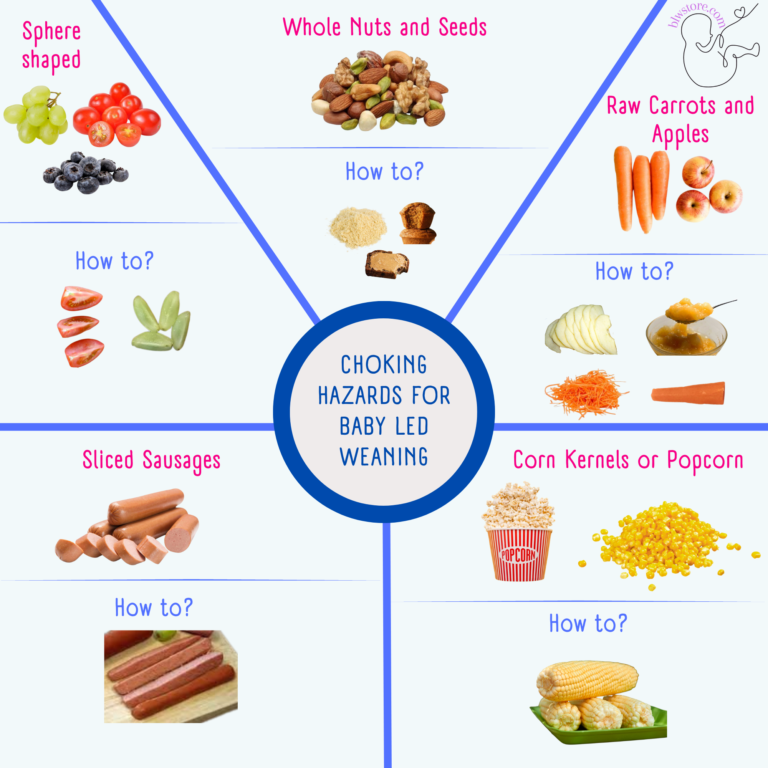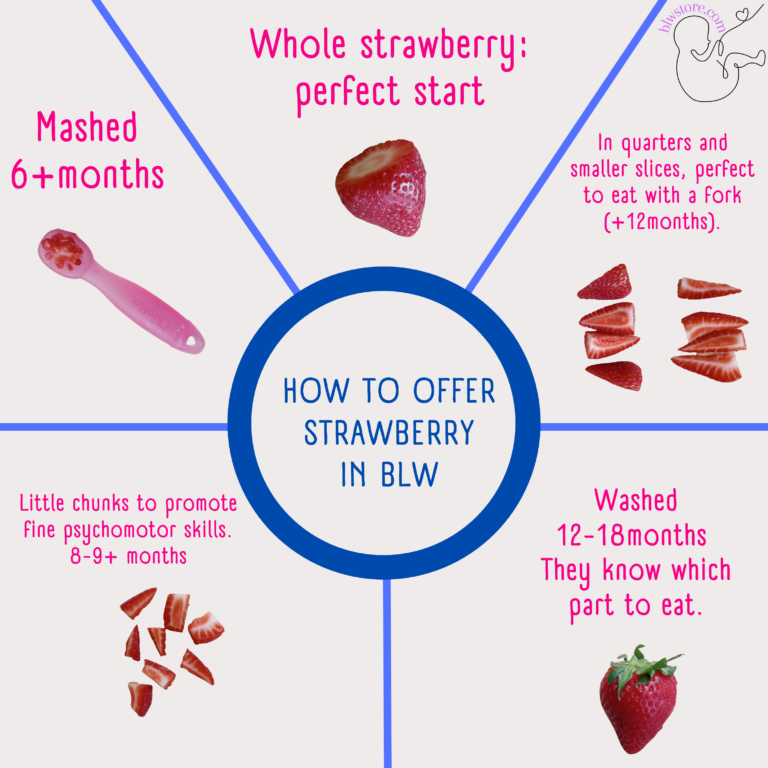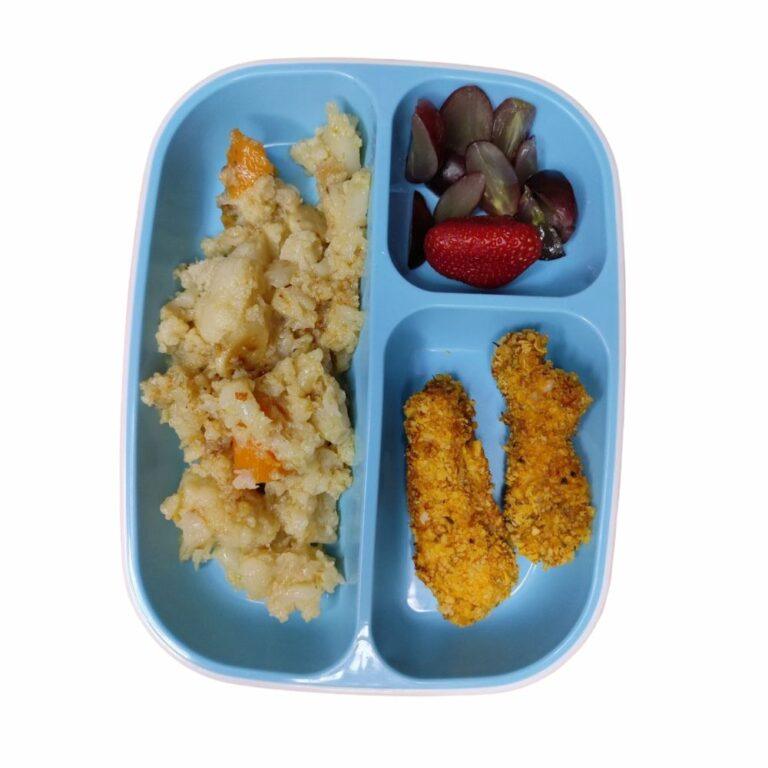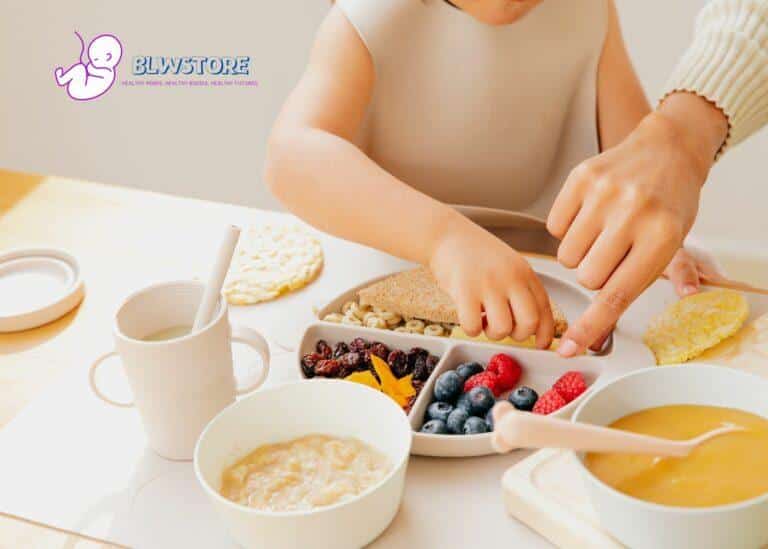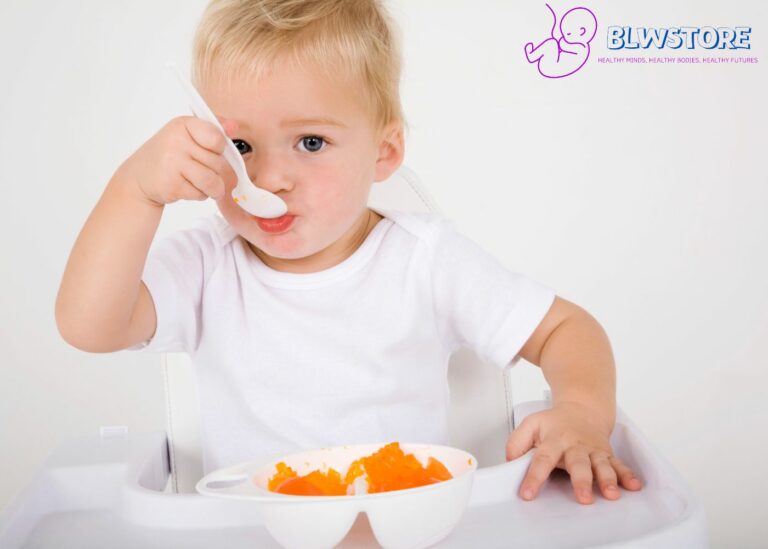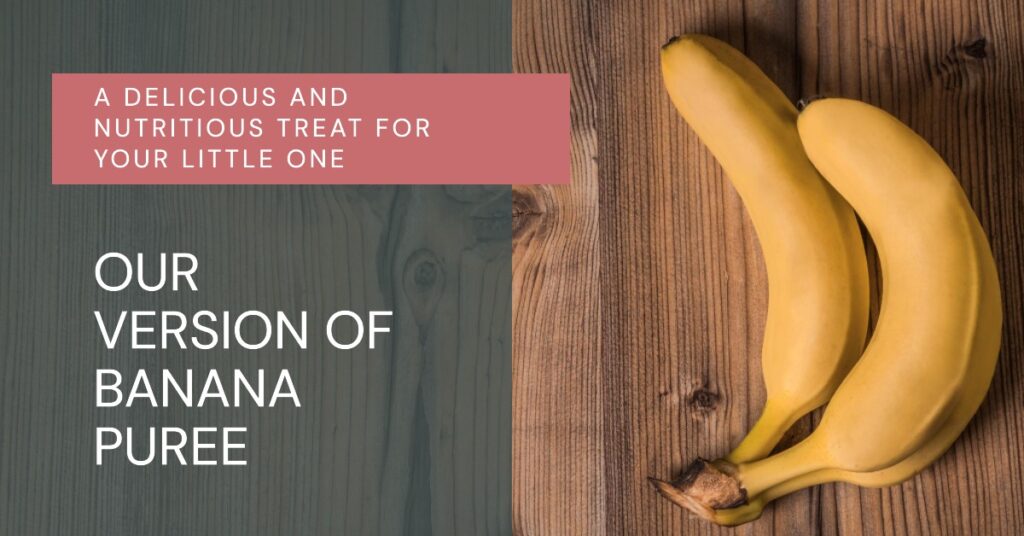
Banana puree is a fantastic choice for your baby’s first foray into solid foods. Not only is it quick to prepare, but its creamy consistency is perfect for tiny palates.
Making your own banana puree ensures you provide your baby with the freshest, most wholesome food. It’s as simple as mashing a ripe banana until smooth, providing a naturally sweet taste without added sugars or preservatives.
We like to experiment with recipes, and we bring you all our favorite variations of the puree that you can copy to offer your baby a variety of flavors and textures, which is precisely what you should do to make your baby the perfect eater.
Let’s get after it!
Our Short Answer: Banana Puree vs Whole for Baby
As complete supporters of the Baby-Led Weaning method, we didn’t start with purees, we started with the whole banana.
The benefits of BLW are too beautiful to be ignored, however, we know that all families are different, and many times for one circumstance or another, starting solids with purees is the best option.
That said, if you are thinking of starting solids with banana puree, we recommend that you try offering a whole banana, as explained here.
Our Favorite Banana Puree with Variations
Equipment
- 1 Blender or food processor
- 1 Knife
- 1 Mixing Bowl (optional)
Ingredients
- 2 2 large ripe bananas
- 1/4 teaspoon Ceylon cinnamon optional
- 1 tablespoon nut butter (almond, peanut, or cashew) optional
- 2 tablespoons 2 tablespoons breast milk or formula optional
- 1/4 cup blueberries or mango optional
Instructions
Simple Recipe
- Peel the bananas and slice them into chunks.
- Place the banana chunks in a blender or food processor.
- Blend until smooth. For a thinner consistency, add a little water.
For Variations
- Add Ceylon cinnamon or nut butter and blend again.
- For baby food, mix with breast milk or formula to desired consistency.
- For a fruit mix, add blueberries or mango and blend until smooth.
- Serve immediately or store in an airtight container in the fridge.
Notes
- Great as a baby food, snack, or dessert topping.
- The nut butter variation adds protein and healthy fats, ideal for older kids and adults.
- Mixing with breast milk or formula makes it perfect for babies.
- The fruit mix variation is a delightful way to introduce new flavors.
How to Select a Perfectly Ripe Banana
- Look for bananas that are mostly yellow with little brown dots.
- Steer clear of bananas with extensive brown patches; they might be overly soft inside.
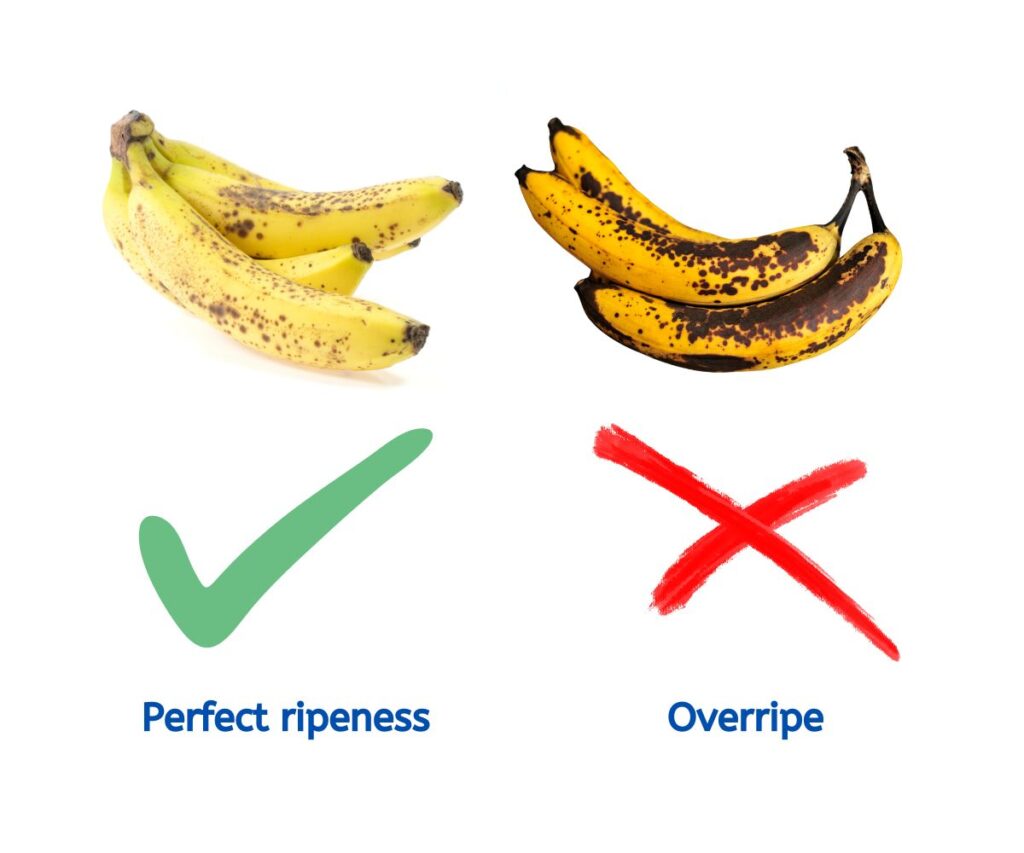
Step-by-Step Guide
- Begin by peeling a fully ripened banana and placing the pieces into your blender.
- Puree the banana chunks until they reach a silky smooth consistency.
- Optionally, mix in a pinch of cinnamon or any other ingredient for added flavor if you want to try the variations.
- Ready to enjoy immediately, or you can store it for later use.
Pro Tip: Add a dash of lemon or orange juice to maintain the fresh color of your puree.
How to Store Banana Puree
To maintain freshness, refrigerate your banana baby food immediately. Aim to use it within 3 to 4 days.
For extended storage:
- Refrigerate: Keep in the fridge, tightly sealed.
- Freeze: Pour into silicone ice cube trays or freezer-safe containers.
- Portion: Freezing in smaller portions simplifies thawing for baby-sized servings.
Thawing Banana Puree
- Refrigerator Method: Place in your fridge overnight.
- Warm Water Bath: Submerge for swift thawing, ideal for small servings.
Delicious Combinations
Vegetables
- Greens such as spinach and kale
- Creamy avocado
- Tender peas
- Soft-cooked sweet potatoes and carrots
- Mild cauliflower
Fruits
- Tropical mango
- Ripe strawberries and peaches
- Juicy apples
- Tangy kiwi
Dairy
- Smooth yogurt
- Mild cottage cheese
- Soft ricotta cheese
Grains & Legumes
- Nutty quinoa
- Hearty oats
- Protein-rich chickpeas and lentils
Spices to Enhance
- Warm cinnamon and nutmeg
- Exotic curry powder
- Fresh mint
- Zesty ginger
You could try these delightful mixtures:
- Banana mingled with peach and strawberry
- Banana with a sprinkle of cinnamon and oatmeal
- Banana combined with spinach and zucchini
- Creamy yogurt blended with banana
- Banana and avocado for a nutrient-dense treat
- A refreshing mix of peas, banana, and kiwi
Other Uses for your Banana Blend
- Add a dollop on pancakes or waffles for a sweet twist.
- Drizzle over your favorite ice cream or frozen yogurt.
- Combine with oatmeal.
Banana Puree FAQ
Can Baby Eat Unripe Bananas?
It is not recommended to give babies unripe bananas, because of their high starch content, making it more difficult to digest.
Can I Use Frozen Bananas?
Absolutely, you can use frozen bananas to make banana purée for your baby. In fact, using frozen bananas can be quite convenient and offers a few advantages:
- Consistency: Frozen bananas, once thawed, can have a softer, creamier texture which is ideal for purées.
- Convenience: Freezing bananas is a great way to store them, especially when you’ve bought in bulk or want to save bananas that are getting too ripe. This way, you always have bananas on hand for quick baby meals.
- Nutrient Retention: Freezing fruits generally retains most of their nutrients, so you’re not compromising on the nutritional value.
- Cooling Effect: If your baby is teething, a slightly chilled banana purée made from frozen bananas can be soothing for sore gums.
How to Properly Thaw Frozen Bananas
Room Temperature Thawing
- How? Leave the banana on the kitchen counter.
- Time? A few hours, varies with room temp.
- Best for: When you’re not in a rush and want even thawing.
2. Refrigerator Thawing
- How? Place in the refrigerator.
- Time? Usually overnight.
- Best for: Safe, consistent, cool thawing.
3. Microwave Thawing
- How? On a microwave-safe dish, use defrost or low power.
- Time? Short intervals, like 30 seconds, check and turn the banana.
- Caution: Avoid overheating to prevent mushiness and hot spots.
4. Cold Water Bath
- How? Submerge in a bowl of cold water; change water every 30 minutes.
- Time? 1-2 hours, depending on banana size.
- Note: Sealed banana recommended.
How to make bananas ripen faster
- Paper Bag Method: Place the bananas in a paper bag and loosely close it. The bag traps the ethylene gas that bananas emit, speeding up the ripening process. For an even quicker result, add an apple or a ripe banana to the bag, as they also emit ethylene gas.
- Warm Places: Keeping bananas in a warm place can also encourage faster ripening. A sunny windowsill, the top of a refrigerator, or near a heat source are good spots.
- Oven Method: For immediate use, you can use an oven. Place unpeeled bananas on a baking sheet and bake at 300°F (150°C) for about 15-20 minutes or until they achieve the desired level of ripeness. This method is great when you need ripe bananas for baking.
- Microwave Method: If you’re in a hurry, you can soften bananas by microwaving them. Poke the peel with a fork, then microwave on high for 30 seconds, checking for softness.
Last Words
We hope our post on Banana Puree for Babies has helped you solve all your possible questions about this amazing starter food for babies.
As complete supporters of the Baby-led Weaning method, we did not start with purees, but we have used them occasionally to offer different textures and combined flavors.
The important thing is that you feel comfortable and safe, but do not forget to keep innovating so your baby is exposed to many different types of textures and flavors.
Happy feeding!
We’re Maria and Alberto, a married couple and educators who are nutrition enthusiasts. Even before we had kids, we were already crazy about nutrition.
We’d read scientific articles, watch videos from nutritionists, and spend hours listening to nutrition podcasts.
Today, we continue doing this, but in a different way, as we’ve learned to sift through the noise and trends. Nutrition, like any other field of knowledge, the more you read and learn, the more you develop a comprehensive understanding of reality, and that’s what has happened to us.
Before having our first child, we focused on learning everything we could about child nutrition, using the same techniques we had already employed, backed by our extensive knowledge in nutrition.
Our mission is to help other parents with their children’s nutrition, to help them become the best versions of themselves.
If we are what we eat and drink, which is absolutely true, let’s do it right!


